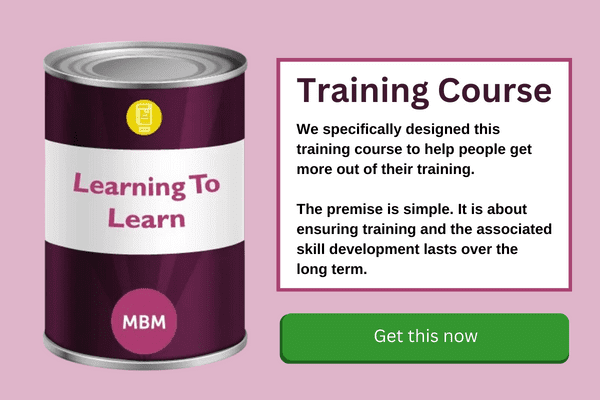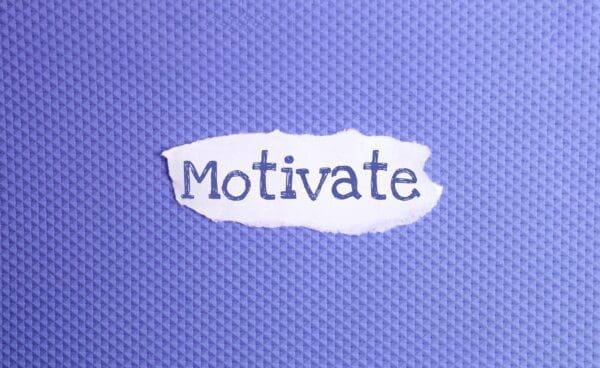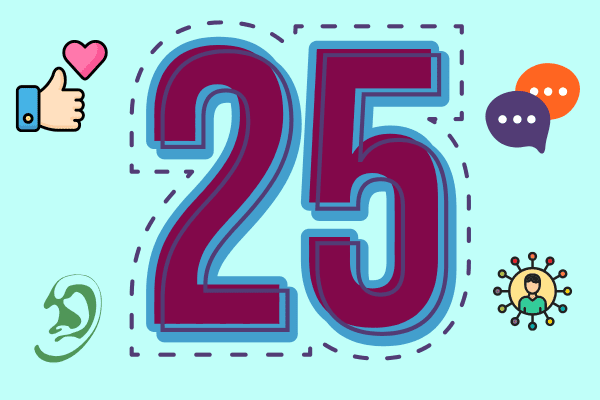Understanding Why People Work Like They Do
Vroom’s Expectancy Theory may not be a management theory you’ve heard of. But it’s based on a simple truth you’ve learnt in childhood. In life, we choose between possible courses of action based on predicting what will happen as a result. We know what we need to do, to get the outcome we want. In business, Vroom’s expectancy theory of motivation helps companies reward people appropriately for their efforts. And you’ll also find Vroom helpful in attracting and retaining the talent you need to succeed in today’s competitive environment.
In this article, we explore how Vroom’s theory emphasises the need for businesses to relate their rewards directly to performance. We also look at how to ensure the rewards you offer to match those deserved and wanted by the recipients. And if you’re not feeling motivated yourself, reading this may help you get your ‘Vroom’ back.

Motivation is a Biological Effect
Despite thousands of years of civilisation, we’re essentially evolved mammals, and motivation is an evolved response to external stimuli. Different stimuli trigger different brain areas and motivate us to productivity in different ways. When the neurotransmitter dopamine is released, our brain works out whether a good or bad thing is about to happen. When we think about a task, dopamine helps predict the outcome of doing it well, poorly or not at all. We start figuring out what we must do to minimise the negative consequences, and maximise the likelihood of a reward.
You Don’t Need To See A Psychologist – Just Read This
Psychologists talk of four types of motivation:
- Extrinsic motivation: You’re motivated to succeed, based on increased financial gain, OR because you fear negative consequences.
- DOWNSIDE: In the end promotions and money may not motivate you anymore.
- Intrinsic motivation: You have an internal desire to succeed, OR you seek self-actualisation.
- DOWNSIDE: Employers may feel you don’t need external rewards like money or promotion because you love what you’re doing. But with a lack of external recognition, you might lose your motivation.
- Introjected motivation: You feel internalised guilt around a previous negative interaction with a boss or colleague, or consistent negative feedback.
- DOWNSIDE: You’re probably not going to feel good about this activity, however, it turns out.
- Identified motivation: You need to perform or accomplish a task, but you don’t act on it until you feel the desire to.
- DOWNSIDE: If you’re a boss or a colleague, you probably won’t want to wait until someone becomes motivated. But when they’re motivated, it can create a lasting change. For instance, when someone becomes enthusiastic about being part of a project, it could transform their productivity.

The Three Components of Vroom’s Expectancy Theory – It’s All About Reward
Victor Vroom’s expectancy theory was published in 1964 when the Western world was undergoing rapid social and cultural change. People saw themselves as individuals and freer to choose – including their work, and how they did it. Faced with this changing mindset, Vroom’s theory explored the process of how people made choices about their work. He broke it down into three components:
- Valence – Knowing how important the desired outcome of your work – reward or success – is to you personally.
- Instrumentality – Seeing the direct connection between your activity level and achieving your goal. Perform well, and you’ll achieve the outcome you’re hoping for.
- Expectancy – Believing making more effort will produce more performance and success
Some people call this the ‘VIE’ theory, based on the first letter of each word.
Sticky Learning ® is 7 times more effective than 1-day training courses. Plus, you will get a Chain of Evidence proving your Return on Investment. Discover soft skills training that changes behaviours long term.

Vroom’s Expectancy Theory Helps Understand How Individuals Will Respond to a Reward Scheme
It’s important for leaders and managers to know the likely response to the rewards they offer before they go live. Let’s unpack Vroom’s components:
Valence is the value individuals place on achieving a given outcome. So, valence is positive when you prefer achieving the outcome to not achieving it. You see the outcome as important because it’s what YOU want, not the boss.

So, if your company offers a reward scheme, these two factors determine its valence for you:
- Preference: The reward on offer satisfies your personal motivation. Hence, if you’re motivated by money, you’re not doing it for peer recognition.
- Background: Your values and behaviours affect what you think about the reward you’re offered. If you want cash, you might not value an all-expenses team holiday.
Instrumentality
Instrumentality is the belief that if you perform well, you will definitely get the outcome you value. Staying with our reward scheme, instrumentality will be high when the rewards offered are clear and meaningful for each individual. For businesses, factors influencing instrumentality are:
- Transparency: Having clear policies in place to determine workplace rewards.
- Clarity: Understanding the relationship between the performance you need to achieve, and the reward for doing it.
- Trust: Knowing that the reward policy applies fairly to everyone, including you.
Expectancy
Lastly, expectancy stems from believing you’re able to do what you’re being asked, to get the reward. Four important factors here are:
- Competency: Having the skills and knowledge you need to achieve the challenge.
- Control: Believing you’re able to reach the desired outcome, and success isn’t out of your hands.
- Difficulty: Confidence or otherwise that the goal is achievable.
- Support: Knowing who can give you the guidance you need to achieve it, or where to find it.
Vroom’s Formula – The Force is Strong With This One

Expectancy theory experts talk about individuals having something called Motivational Force. An individual’s Motivational Force is the product of the three elements we’ve been talking about, Expectancy, Instrumentality and Valence.
Vroom expressed his theory in this formula:
Motivation = Valence x Expectancy x Instrumentality
If one of the three factors isn’t there, so its value is nil, the overall score will be zero. There will be no motivation.
As we’ve established, expectancy is down to the individual’s perception. Vroom’s expectancy theory proposes employees can be motivated to achieve their goals, whatever they might be. That’s provided they believe it’s likely that:
- There‘s a positive correlation between their efforts and their performance.
- Effective performance will lead to the outcome they expect.
- The outcome, or the reward based on it, will be something they value.
Returning to our opening point, how people make choices about work, they make a conscious choice between different behaviours. In other words, we choose to try to achieve a particular standard because it suits us to.
This Job of Mine is Really Sensational
Actually, EVERY job is sensational. Literally. The drivers in our brain classify the new information we receive with a reward or threat sensation in our body. We then choose how we wish to respond. In the same way, Vroom’s expectancy theory assumes our work behaviour results from consciously choosing alternatives that will maximise pleasure and minimise pain.
Let’s look at how businesses can put expectancy to use. There are five steps:
- Make sure your promises to your team align with company policy.
- Create challenging but achievable goals.
- Ensure the assigned tasks match the team member’s skill set.
- Set clear connections between performance and reward.
- Make reward distribution fair and logical.
HR People and Employees Use Vroom’s Expectancy Theory, Though They May Not Know it

We’ve talked about applying expectancy theory to rewards. Here are some other examples of Vroom’s Expectancy Theory in practice:
- HR and corporate leadership hold recruiters accountable for assembling a pool of qualified applicants whenever there’s a vacancy: Recruiters do in-house job postings in expectation of generating interest among the current workforce, supporting employee retention efforts.
- It works both ways in interviews: Interviewees brush up their presentation skills and company knowledge in expectation of a second interview or a job offer. Interviewers shape their questions in expectation of eliciting responses which identify suitable candidates.
- Employees base their level of work on anticipation of the employer’s response: This might include a pat on the back, a positive performance appraisal or better work assignments.
That’s Motivation! First Came Hertzberg, Then Came Vroom
Five years before Vroom, in 1959 American psychologist Frederick Hertzberg published his book ‘The Motivation to Work.’ This identified certain workplace factors contributing to job satisfaction. The motivators encouraged employees to work harder and include:
- Achievement
- Recognition
- Rewarding work
- Increased responsibility
- Personal advancement
- Growth opportunities
Hertzberg also identified a second set of factors with the opposite effect, causing dissatisfaction in the job. These hygiene factors include:
- Company policies
- Supervision
- Work relationships
- Work conditions
- Remuneration
- Salary
- Security
The hygiene factors won’t encourage us to work any harder, or stay with a business. But they can be demotivating if they aren’t present in a job.
Suits You, Sir! Taking Individual Motivation to the Max

Understanding how motivation works help decide which type of motivation will work best for individual team members. Going back to the four types of motivation, here are some suggestions for best practice:
- Extrinsic motivation: Consistently incentivise people with tangible rewards. These can be small, or large as appropriate.
- Intrinsic motivation: Be generous with your verbal praise in one-to-ones or in emails.
- Introjected motivation: Focus on applying positive feedback to team members’ work, and help rebuild their self-esteem.
- Identified motivation: If they take a while to find their mojo, ask if you can do anything to help them.
VROOM to a Higher Level of Expectancy
Inevitably people have criticised Vroom’s theory, calling the expectancy model too simplistic. Edward Lawler said it was ‘deceptive’ in assuming if you make rewards enticing, people will increase productivity to obtain them. He pointed out this only works if they believe the reward is beneficial to their immediate needs. If the reward pushes them into a higher tax bracket, they may not be so keen. Or, if they get a better position but have to work longer hours, that may put them off.
Lawler refined Vroom’s model, based on these four points:
- Wherever there are a number of outcomes, individuals will always have one they prefer.
- The individual must believe they will achieve the outcome they prefer.
- The desired outcome is generated by the individual’s behaviour.
- The individual’s actions are motivated by the preferred outcome and expectation.
In the construction industry W.F. Maloney and J.M. McFillen explained behaviours seen there as ‘worker expectancy’ and ‘worker instrumentality’:
- Worker expectancy: Supervisors create an equal match between workers and their jobs
- Worker instrumentality: Employees know any increase in their performance leads to more likelihood of achieving their goal.
Sorry, That’s Not Fair
In real life, effort doesn’t always match reward. Vroom’s theory doesn’t apply if there’s bad blood between boss and employee. An employee can try really hard to get a raise. But if the boss doesn’t want to give them one, all their effort will be for nothing. Eventually, they’ll leave. You didn’t want to do that…
And Finally: Put a Vroom in Your Working Relationships

You can transform your business by using Vroom’s Expectancy Theory as a code to work by.
- Valence: Act on your knowledge of, or make informed assumptions about, the value the individuals you deal with place on achieving a given outcome. Understand their preference – what they want to achieve, and why. Again, act on your knowledge of, or establish, their background and their values and how these affect their likely behaviour.
- Instrumentality: Be clear that if the other person performs well, they will definitely get the outcome they value. Establish transparency, clarity and trust.
- Expectancy: Confirm on both sides, that the other person is able to do what they’re asked, to get the desired result. Make sure there is competency, that people have the skills, knowledge and capability, to achieve the challenge. Establish control, the belief that they’re able to reach the desired outcome, and success isn’t out of their hands. Understand the likely difficulty, and have confidence that the goal is achievable. Establish where to find support and know who can give the guidance and where to find the resources needed to achieve the outcome.
Everyone’s a Win-Winner, Baby
To end, here are some real-world examples of how to live out Vroom’s Expectancy Theory in your job:
HR Managers
- Make it clear what you expect the team to do, and support and train them.
- Be consistent: Set out HR policies and guidelines, including job ad wording, job offer letters and responses to unsuccessful applicants.
- Listen to feedback, social media and the grapevine, and act as appropriate.
- Feedback to leadership and managers so you work together to advance the company goals.
Line Managers

- Be open and communicative with team members.
- Make sure you are clear and fair about what is expected, and give positive feedback.
- Celebrate achievement.
- Offer training and development opportunities.
Buyers
- Make your position clear on things like expected rate of sale, price, margin, and promotional support.
- Even if you say no this time, give them a chance to come back with another proposal.
- Get to know suppliers, and build win-win relationships based on transparency and trust.
Directors
- Be communicative and supportive, not just with managers and department heads, ALL employees.
- Show firmness and fairness about the goals you set.
- Understand how people’s backgrounds and values impact their approach.
- Encourage an achievement culture where people want to perform.
Logistics & Distribution Managers
- Be clear in your expectations of your team members and subcontractors.
- Get to know your drivers and operatives, and praise their performance.
- Encourage other departments to support you and your L&D colleagues.
- Be transparent with leadership about the difficulties you’re having and the help you need.
Everyone deserves a shot at a rewarding working life. Apply Vroom’s Expectancy Theory, and give your business some VROOM!
Check us out on YouTube.




